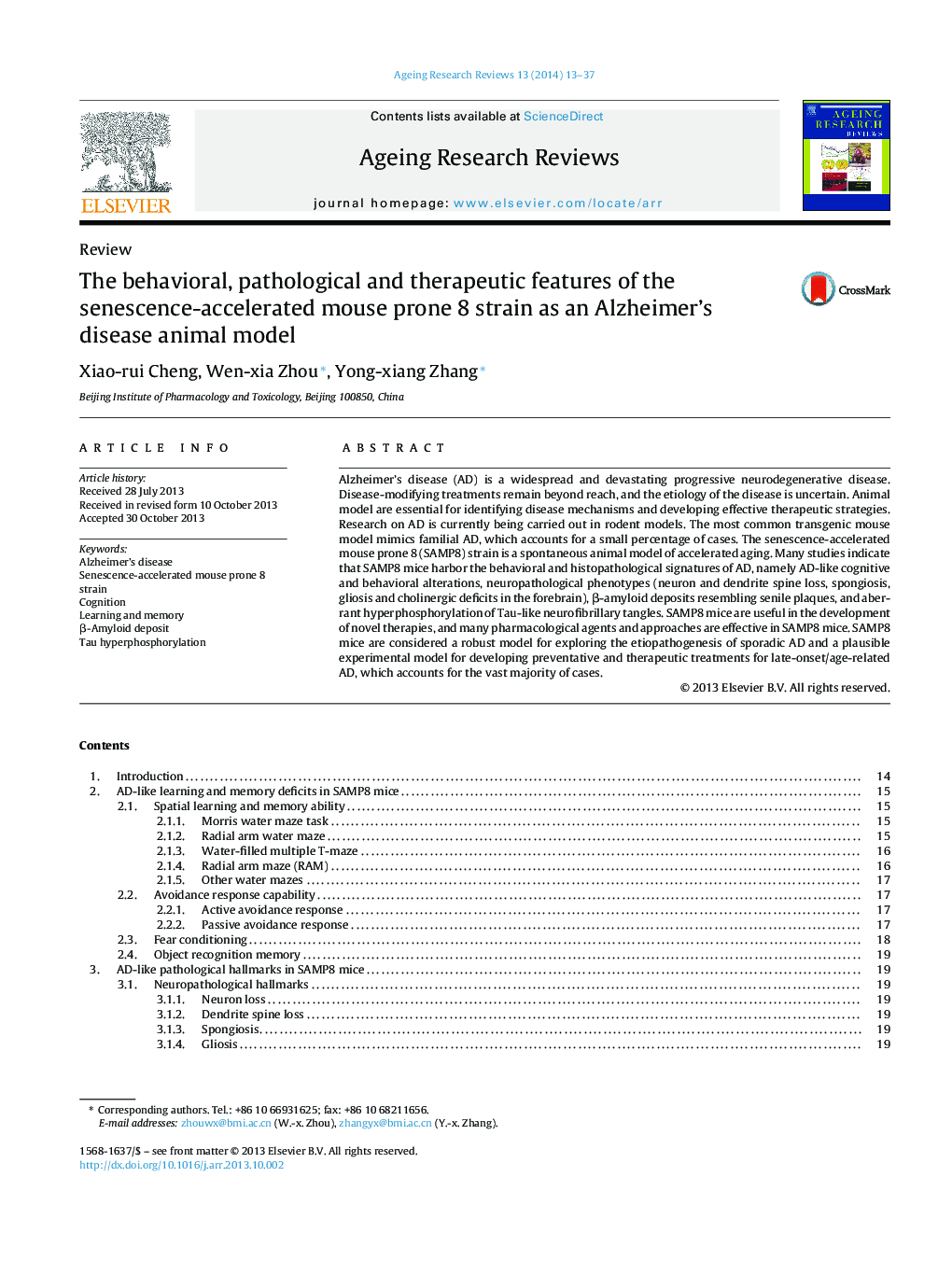| Article ID | Journal | Published Year | Pages | File Type |
|---|---|---|---|---|
| 8257298 | Ageing Research Reviews | 2014 | 25 Pages |
Abstract
Alzheimer's disease (AD) is a widespread and devastating progressive neurodegenerative disease. Disease-modifying treatments remain beyond reach, and the etiology of the disease is uncertain. Animal model are essential for identifying disease mechanisms and developing effective therapeutic strategies. Research on AD is currently being carried out in rodent models. The most common transgenic mouse model mimics familial AD, which accounts for a small percentage of cases. The senescence-accelerated mouse prone 8 (SAMP8) strain is a spontaneous animal model of accelerated aging. Many studies indicate that SAMP8 mice harbor the behavioral and histopathological signatures of AD, namely AD-like cognitive and behavioral alterations, neuropathological phenotypes (neuron and dendrite spine loss, spongiosis, gliosis and cholinergic deficits in the forebrain), β-amyloid deposits resembling senile plaques, and aberrant hyperphosphorylation of Tau-like neurofibrillary tangles. SAMP8 mice are useful in the development of novel therapies, and many pharmacological agents and approaches are effective in SAMP8 mice. SAMP8 mice are considered a robust model for exploring the etiopathogenesis of sporadic AD and a plausible experimental model for developing preventative and therapeutic treatments for late-onset/age-related AD, which accounts for the vast majority of cases.
Related Topics
Life Sciences
Biochemistry, Genetics and Molecular Biology
Ageing
Authors
Xiao-rui Cheng, Wen-xia Zhou, Yong-xiang Zhang,
